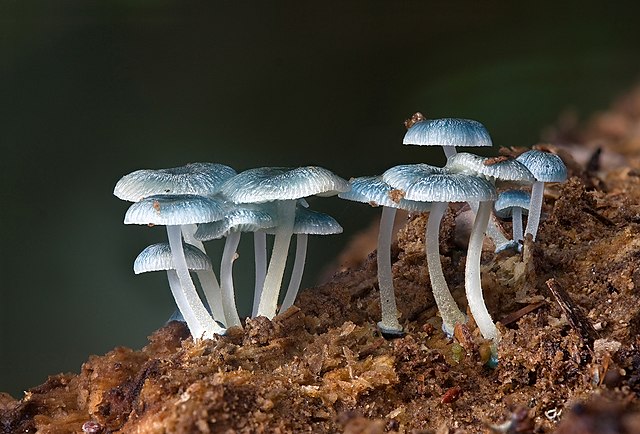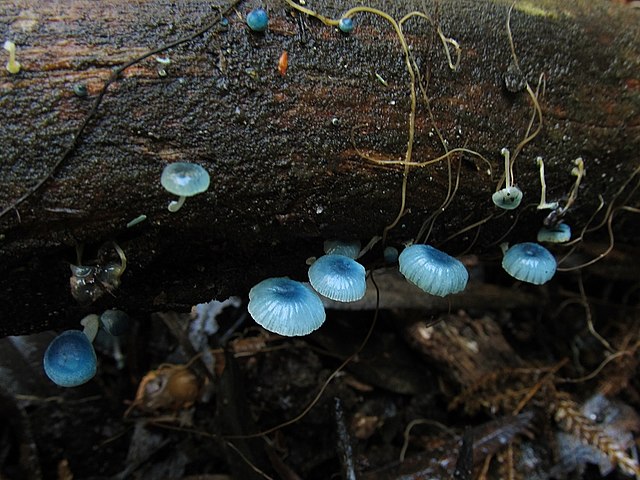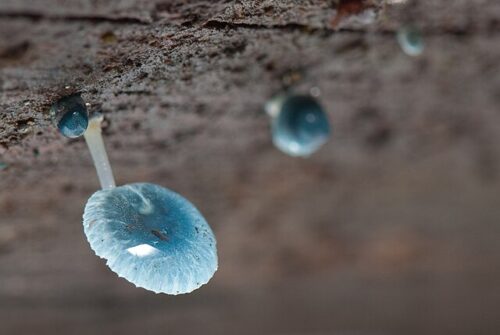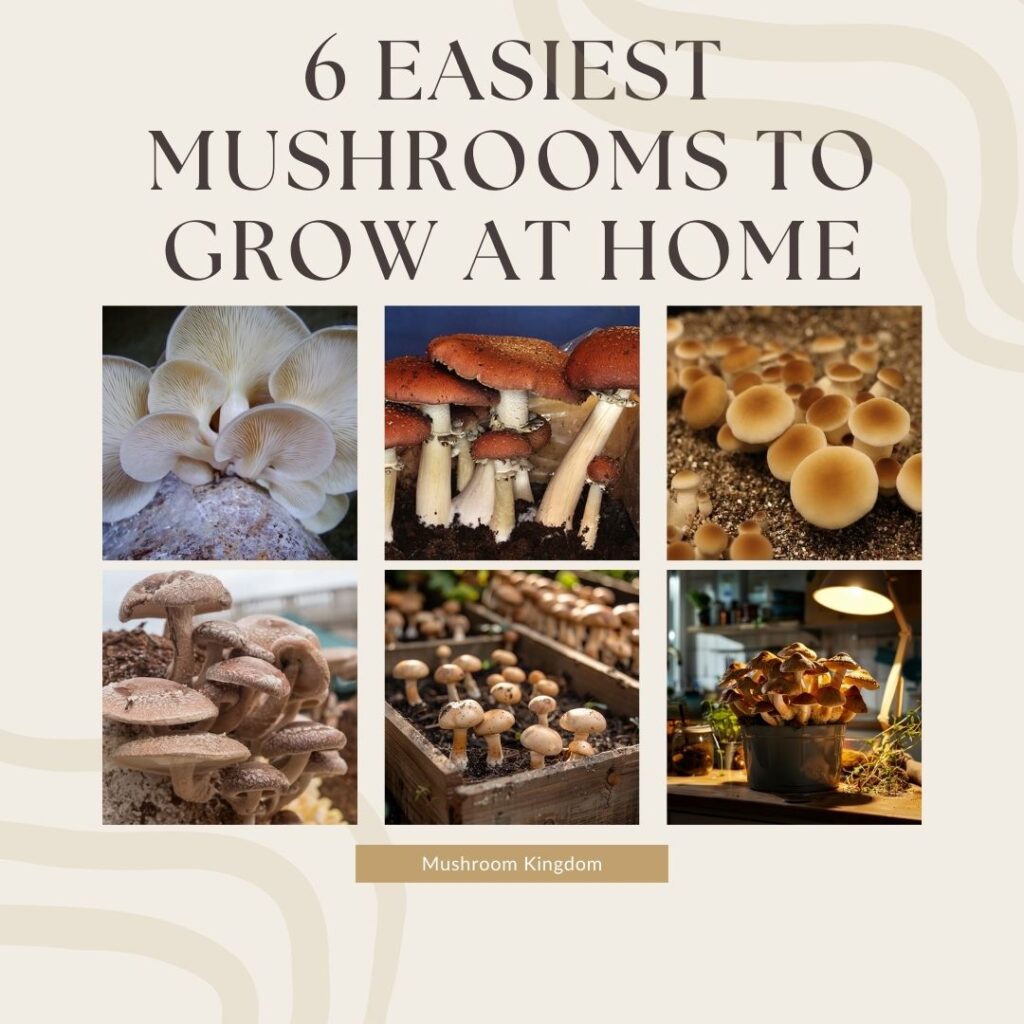Mycena interrupta, commonly known as the “blue toadstool” or “pixie’s parasol,” is a small, vividly blue mushroom found in moist, shaded rainforests of Australia, New Zealand, and New Caledonia.
Let’s further explore the characteristics of this beautiful mushroom.

How To Identify Mycena interrupta?
To identify Mycena interrupta in the wild, look for its small, bright blue cap that fades with age, smooth and slightly sticky surface, white to pale blue gills, and short, translucent stem.
When searching for it, consider its size and growth pattern. It is relatively small compared to other mushrooms, and it often grows in small clusters rather than alone.
Here is a more detailed guide.
The cap
The cap appears bright blue when young, gradually fading to a paler blue or even whitish as it ages. Initially, the cap is convex, becoming more broadly convex to almost flat over time. This is why people also refer to is as blue mycena mushroom.

It measures about 0.5 to 1.5 cm in diameter. The cap’s surface is smooth and slightly sticky when moist, with radial grooves becoming visible as the mushroom matures.
The Gills
The gills are white to pale blue and are adnate to slightly decurrent, meaning they are attached to the stem and may run slightly down it.
The stem, or stipe, mirrors the cap’s color, ranging from the same bright blue to a slightly paler shade. The stem is relatively short, up to 2 cm long and 1–2 mm thick, and it has a smooth, somewhat translucent surface.
Spore Print
Also, Mycena interrupta produces a white spore print, a feature that can help confirm its identification. To obtain a spore print, place the cap, gill side down, on a piece of white paper and leave it for several hours or overnight.
Mycena Interrupta Habitat
This mushroom thrives in specific habitats. You will typically find Mycena interrupta in the forests of Australia, New Zealand, and New Caledonia late in the spring to early autumn.
It grows on decaying wood, particularly in moist, shaded environments within rainforests. Its presence is most common during the wetter months, which vary by region but generally include late spring to early autumn.
Is Mycena Interrupta Edible?
No, it is not considered edible. Though its striking blue appearance makes it stand out, this mushroom lacks any known nutritional value and may contain compounds that could be harmful if ingested.

Also, its small size and delicate structure do not make it a practical choice for foraging.
Always prioritize safety and consult local guides or experts when identifying and selecting wild mushrooms for consumption. Consult local field guides or mycologists if you are unsure about an identification.
Mycena interrupta has a few look-alikes that you might encounter in the wild. Here are some notable ones:
- Mycena subcyanescens: This species is similar in size and shape but can be distinguished by its tendency to exhibit a slightly different shade of blue and different habitat preferences.
- Mycena lazulina: Another blue Mycena species, M. lazulina can resemble pixie’s parasol but typically has a more slender stem and may differ in the exact shade and intensity of blue.
- Entoloma hochstetteri: Known as the “blue pinkgill,” this mushroom is also bright blue but belongs to a different genus. It has a more robust structure and a pinkish spore print, unlike the white spore print of pixie’s parasol.
- Mycena caerulea: This species is found in different geographical locations (Europe and North America) but shares the blue coloration. It usually has a paler blue hue and can be differentiated by its different habitat and geographic range.
Mycena Interrupta Etymology
The name Mycena interrupta derives from Greek and Latin roots. “Mycena” comes from the Greek word “mykes,” meaning mushroom or fungus, which is a common prefix used in the names of fungi within the Mycena genus.
“Interrupta” is a Latin term meaning “interrupted” or “broken,” likely referring to the distinctive appearance of the gills or the overall growth pattern of this mushroom.
People also refer to it as:
- pixie cap mushrooms
- pixie’s parasol
- blue mycena mushroom
Together, the name Mycena interrupta describes a specific species within the Mycena genus that features notable interruptions in its structure or appearance.
Is pixie’s parasol Bioluminescence?
Mycena interrupta does not exhibit bioluminescence, which means it does not produce light in the dark. This distinguishes it from some other species in the Mycena genus known for their bioluminescent properties, such as Mycena chlorophos.
Instead, Mycena interrupta is primarily recognized for its vibrant blue coloration, which makes it stand out in its natural habitat.


